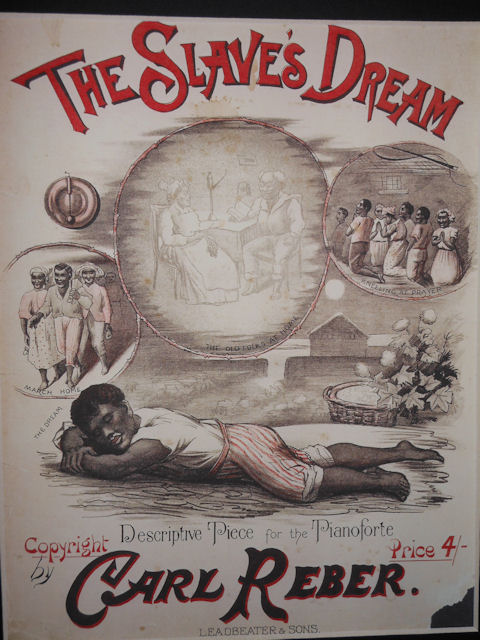“Where the Mind is Without Fear” was written during the British reign in India, before the country gaining its independence from colonial rule. In fact, Tagore died just a few years before 1947, when India became independent. So the country that he was living in was a country under oppression. However, the oppression was not just physical in nature but mental as well. The Indian population had started believing that they would never be free. They were always afraid of what they would be subjected to next by the British administration. They had lost their self-confidence and dignity. Thus, their spirit had been entirely drained out of them, and they were left pessimistic.
Many Indians were denied admission into the elite educational institutes, which were meant exclusively for the children of colonial officers. Only rarely were Indians admitted, and that too, if they were to gain entry there, they had to belong to the upper classes, especially that class of the native population that chose to side with the British and were always at their beck and call. As a result, the Indian nation-states were then willing to fight it out amongst themselves to favor colonial rulers. All this upset the poet greatly.
So he dreamt of a better tomorrow – one in which his country would stand up for truth, for hard work, for a reason, and for determination. He wanted his countrymen to stand united against the British, make themselves irreprehensible and fight for their freedom. He wanted them to be open-minded and for their actions to speak louder than their words. By referring to God as “Father,” he was saying that all of his countrymen were the children of God. Hence they must not discriminate amongst themselves on the basis of caste or creed but must stand up for each other. They have a common goal – independence – and must work side by side to achieve it.
The poem is composed in lucid language, simplified diction, images, and other poetical devices. We recommend you go through our summary of Where the Mind is Without Fear before reading this analysis if you’re not clear with the idea of the poem.
Where the Mind is Without Fear: Analysis
FORM:
The verse form of the poem is free verse, having no metrical patterns or rhymes. He was credited for having discovered this new form of composing poems, called prose poems.
ALLITERATION in Where the Mind is Without Fear:
Tagore has used alliteration in his poem, Where the Mind is without Fear. Alliteration is the repeated use of the same consonant sound at the beginning of each word in a line of verse. Here, in this poem, the examples of alliteration are as follows,-
‘head held high,’ ‘where the world,’ ‘dreary desert sand of dead habit,’ and ‘where words.’
METAPHOR:
A metaphor is a figure of speech in which a word or phrase is applied to an object or action that does not literally denote in order to imply a resemblance. In simpler words, comparing two words but not clearly stating. Examples of metaphor in the poem-
‘clear stream of reason’ and ‘dreary desert sand of dead habit.’
PERSONIFICATION:
“a tireless striving stretches its arms towards perfection” is an example of fine personification in the poem. Personification refers to the attribution of human qualities to inanimate ideas. Here the ‘tireless striving’ has been personified like a human being stretching his arms to reach his goal through perfection.
STYLE:
Where The Mind Is Without Fear was included in the volume called ‘Naibedya,’ the original poem bears the title ‘Prarthana’ meaning prayer. The poem is a prayer to God. A poem is a form of a prayer to the universal father figure, presumably God. Tagore prays to the father figure for a country where the people should be free from fears, where knowledge would be free to all individuals, and the people from all religions should be united. He wants India to be awake in such a heavenly state.
Where the Mind is Without Fear: Portrayals
The portrayal of the British Rule:
Through the poem, the poet has revealed subtlety the miserable condition of India during the British Rule. The state of India can be understood by the opposites of the phrases used in the poem. Following few are the examples of the phrases used-
* Mind without fear implies a mind full of fear
* Head held high implies head bowed down (no dignity)
* Perfection implies imperfection
* Truth implies lies
*Knowledge for free implies restricted knowledge
The above opposites imply the state of the country under British Rule and, therefore, the poet’s earnest prayer to the Lord to reverse the current condition of the state.
Freedom expressed in Where the Mind is Without Fear:
Where the Mind is without Fear was written when India was under British Rule. Tagore wanted his motherland to attain freedom from all levels- religious, political, moral, and intellectual. The following are the kind of freedom Tagore insisted upon.
*Freedom from oppression
* Freedom of thought and expression
*Freedom to acquire knowledge
*Freedom to speak truth
*Freedom of mind
*Freedom to attain perfection
Where the Mind is Without Fear: Themes
Banga-bhanga (Division of Bengal): In 1905, the Indian state of Bengal was divided into two parts by the British – West Bengal and East Bengal. East Bengal later became Bangladesh in 1971. The division was done according to the policy that came to be known as the’ divide and rule policy. It was done based on religious identity. In the regions included under West Bengal, the Hindu population was considerably greater than the Muslim population, and in the regions included under East Bengal, the Muslim population was present in a larger proportion than the Hindu population. The division of Bengal was known as “Banga-bhanga” in the Bengali language, “Banga” being the original Bengali name of the region (the mane of which was later Anglicized) and “bhanga” meaning the action of breaking something. This was an event that directly affected every citizen of the previously united territory of Bengal, and Tagore was no exception. Hence, it is probably the division of Bengal that he has in mind while writing lines 3 and 4 of “Where the Mind is without Fear,” in which he speaks about the nation being broken into fragments. Written as it was in 1910, you can see that the poet is still deeply saddened by it five years after the event. In fact, the Indian festival of ‘rakhi’ (during which sisters tie rakhi on the hands of their brothers) is derived from something that Tagore started. One auspicious day, Tagore appealed to all Hindus in Bengal to go out in the streets and tie a thread on the hands of their Muslim brothers and vice versa. This was an initiative on his part to protest against the division of Bengal.
Combination of East and West: Tagore was not one of the staunch nationalists who believed that everything about the West was bad. In fact, he believed that many practices of the West could be incorporated into Indian culture to make it better. His novels like Gora and Ghare Baire speak of the synthesis of the two cultures. That a British boy could come to love India and consider his motherland was a radical message at the time. English mistresses could educate that Indian women were another. Tagore was also greatly influenced by English poetry, especially that of the Romantics, and uses similar themes in his own poems. He also adopted many Western tunes for his Bengali lyrics. The most famous example of this is “Purano shei diner kotha,” which was set to the tune of Robert Burns’ Scots poem “Auld Lang Syne.” In this poem, too, Tagore advocates applying the Western virtue of reason to do away with the superstitions harbored by his fellow men. As we know, the reason was a legacy of the Age of the Enlightenment that came to England in the 18th century. However, Tagore felt that it ought to be adopted by the Indian peoples as well, for it would help them become more open-minded and teach them to have more confidence in themselves. Ultimately it would help them to gain their independence from their colonial rulers. This technique is known in postcolonial studies as ‘using the master’s tools to dismantle the master’s house.’
Where the Mind is Without Fear: Tone
The Poem starts with a wistfulness, a longing, a yearning for a land where there would be freedom from fear, superstitions, age-old beliefs, and customs. The first eight lines give us an impression of the poet seeking a world that sounds almost utopic. But as we progress in the poem, we realize that the poet‘s thought is crystallized, and his “heaven of freedom” stands for a country that is independent, where there is no repression, and a society that gives equal opportunities irrespective of religion, caste, creed or color.
The title of the poem is very significant and appropriate to convey the expressions and thoughts in the poem. I hope you’ll share this analysis of Where the Mind is Without Fear by Rabindranath Tagore.
Conclusion: “Where the Mind is Without Fear” is one of the best-known poems of Tagore. That is because its message can easily stand the test of time. Of course, it was inspirational to be the freedom fighters of India at the time in which it was written. However, it has continued to move readers for a century since then. The way in which it defines freedom is radical – not just freedom from the rule of another race, but freedom of the mind. That is the kind of freedom that everyman craves, even one who is living in a supposedly free state. That is why its subject matter is relatable to all readers, and it inspires them greatly as well.
Other than Where the Mind is Without Fear: Analysis, refer to the Summary of Where the Mind is Without Fear.
Some online learning platforms provide certifications, while others are designed to simply grow your skills in your personal and professional life. Including Masterclass and Coursera, here are our recommendations for the best online learning platforms you can sign up for today.
The 7 Best Online Learning Platforms of 2022
- Best Overall: Coursera
- Best for Niche Topics: Udemy
- Best for Creative Fields: Skillshare
- Best for Celebrity Lessons: MasterClass
- Best for STEM: EdX
- Best for Career Building: Udacity
- Best for Data Learning: Pluralsight
















